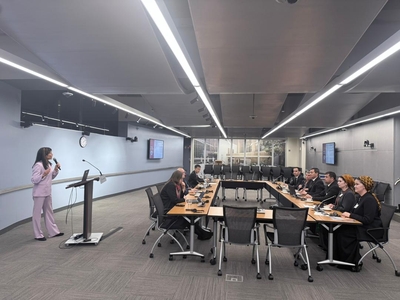A delegation from the Ministry of Education of Turkmenistan, headed by Deputy Minister Azat Ataev, held a working meeting with World Bank leaders and experts in Washington on October 27 to coordinate practical steps for developing a knowledge-based economy, improving the quality of education, and building a sustainable link between “economic planning – education and skills – scientific research, and technology transfer”.
The World Bank was represented by Michal J. Rutkowski, Regional Director for Human Capital in Europe and Central Asia; Beatrice Maser, Executive Director of Office No. 24 (the constituency that includes Turkmenistan); and Senior Education Economists Maria Marta Ferreira, Saurabh Dev Bhatta, and Shiro Nakata.
Key discussion topics:
— establishing a two-way architecture linking the economy, education and skills, and R&D/technology transfer, grounded in national priorities and management analytics;
— deploying World Bank knowledge and methodologies: ASA (Advisory Services and Analytics), SABER (Systems Approach for Better Education Results — Workforce Development), STEP (Skills Toward Employment and Productivity), LMI (Labor Market Information), external and internal quality-assurance practices, and HEMIS-type higher-education management approaches;
— preparing to pilot an integrated decision-support platform for higher and vocational education (linking student/academic data, labor-market information, the quality-assurance registry, and R&D/technology-transfer workflows).
As underlined during the meeting, implementing these steps will accelerate the transition to data-driven management, strengthen the relevance of programs to labor-market demand, enhance universities’ role in applied research and technological development, and institutionalize outcome measurement — from learning achievements and graduate employment to technology-transfer metrics.
The parties agreed to continue work along three tracks: delivery of a knowledge pack and technical sessions; collaboration on expertise and analytics under an ASA; and calibration of the parameters for the pilot integrated solution with the participation of universities and secondary vocational institutions.









